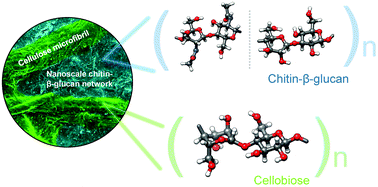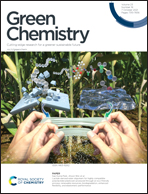Grow it yourself composites: delignification and hybridisation of lignocellulosic material using animals and fungi
Abstract
The use of chemical and energy intensive delignification processes in industrial pulping generates cellulosic fibres that are hydrophilic, hygroscopic and functionally restricted to paper and cardboard applications. Here, we propose a bio-based alternative to chemical pulping utilising herbivores to harvest and grind lignocellulosic materials followed by natural fungal growth to delignify and hybridise them to generate hierarchical composite papers with altered, water-repelling surface properties. These papers comprise cellulose and fungal biopolymers produced by cultivation of T. versicolor and P. ostreatus on elephant manure. Papers with considerably more hydrophobic surfaces were obtained at glucosamine contents as low as 0.1 wt%. Paper tensile strengths and elastic moduli were improved with longer fungal growth periods, spanning several weeks, resulting in comprehensive interfacing of cellulose microfibrils through tough nanoscale fungal chitin-β-glucan networks within the papers. Papers produced from lignocellulosic material colonised with P. ostreatus for 16 weeks exhibited the highest tensile strengths and more hydrophobic surfaces than T. versicolor. Hybridisation of lignocellulose with fungal biopolymers resulting in improved surface and mechanical properties highlights the extended opportunities of fungal delignification bioprocessing and demonstrates the considerable potential of the fungal biorefinery as an economical, and as of yet underexploited technology.

- This article is part of the themed collection: 2021 Green Chemistry Hot Articles


 Please wait while we load your content...
Please wait while we load your content...